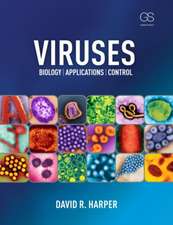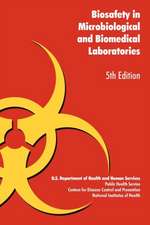The Biology of Paramecium
Autor R. Wichtermanen Limba Engleză Paperback – 27 sep 2013
Preț: 1110.32 lei
Preț vechi: 1168.76 lei
-5% Nou
Puncte Express: 1665
Preț estimativ în valută:
212.49€ • 221.02$ • 175.42£
212.49€ • 221.02$ • 175.42£
Carte tipărită la comandă
Livrare economică 14-28 aprilie
Preluare comenzi: 021 569.72.76
Specificații
ISBN-13: 9781475703740
ISBN-10: 1475703740
Pagini: 620
Ilustrații: XIX, 599 p. 141 illus.
Dimensiuni: 152 x 229 x 33 mm
Greutate: 0.82 kg
Ediția:1986
Editura: Springer Us
Colecția Springer
Locul publicării:New York, NY, United States
ISBN-10: 1475703740
Pagini: 620
Ilustrații: XIX, 599 p. 141 illus.
Dimensiuni: 152 x 229 x 33 mm
Greutate: 0.82 kg
Ediția:1986
Editura: Springer Us
Colecția Springer
Locul publicării:New York, NY, United States
Public țintă
ResearchCuprins
1 Classification and Species of Paramecium.- A. Introduction.- B. Taxonomy.- C. Genus Characteristics Emend.- D. “Aurelia” and “Bursaria” Groups.- E. Key to the Common Weil-Defined Species of Paramecium.- F. Problems in the Systematics of Paramecium Species.- G. Descriptions of the Species of Paramecium.- 2 Morphology and Cytology of Paramecium.- A. Introduction.- B. Cortex: Pellicle, Ectoplasm, and Associated Structures.- C. Endoplasm: Organelles and Inclusions.- D. Nuclei.- 3 Physical and Chemical Properties of the Protoplasm of Paramecium.- A. Introduction.- B. Permeability and Membranes.- C. Effects of Temperature and Various Agents on Protoplasm of Paramecium.- D. Effects of Space Flights Aboard Soviet Orbital Station Salyut 6.- 4 The Nutritional Requirements of Paramecium: Axenic Media.- A. Introduction.- B. Essential Neutralities and Axenic Media for Various Species of Paramecium.- C. Concluding Remarks.- 5 Nutrition, Growth, and Respiration.- A. Introduction.- B. Ingestion and Food-Vacuole Formation.- C. Secretion, Digestion, and Egestion.- D. Growth and Morphogenesis.- E. Factors That Yield Optimal Growth.- F. Respiration.- 6 Movement, Behavior, and Motor Response.- A. Ciliary Movement and Locomotion.- B. Response to Various Types of Stimuli.- C. Behavior of Paramecium and the Question of Learning.- 7 Reproduction, Morphogenesis, Nuclear Processes, and Sexuality.- A. Asexual and Other Similar Processes Involving Nuclear Reorganization.- B. Sexual Processes and Related Phenomena.- 8 Genetics: The Mating Reaction, Mating Types, System of Breeding Relationships, and Inheritance in the Species of Paramecium.- A. Introduction.- B. Inheritance in Asexual or Vegetative Reproduction.- C. Mating, Mating Types, and Inheritance in Sexual Reproduction.- D. SomeAspects of the Mating Phenomenon and Characteristics of the Mating Substance.- E. Regeneration and Morphogenesis.- 9 The Life Cycle, Longevity, and Aging.- A. Background.- B. Isolation Cultures and Clonal Aging.- C. Longevity and Clonal Aging in Regard to Autogamy, Cytogamy, and Conjugation.- D. The Question of Cyst Formation in the Life Cycle.- 10 The Antigens of Paramecium.- A. Introduction.- B. Surface Antigens and the Immobilization Reaction.- C. Serological Studies on Speciation and Conjugation.- D. Genetic Analysis: Inheritance of Antigenic Variation and Regulation of Surface-Antigen Expression.- 11 Organisms Living in and upon Paramecium: The Endosymbionts.- A. Paramecia as a Source of Food for Metazoan Animals: Their Role in the Food Chain in Nature.- B. Associations of Paramecium with Other Microorganisms.- C. Evolution of Endosymbionts of Paramecium.- References and Bibliography.



